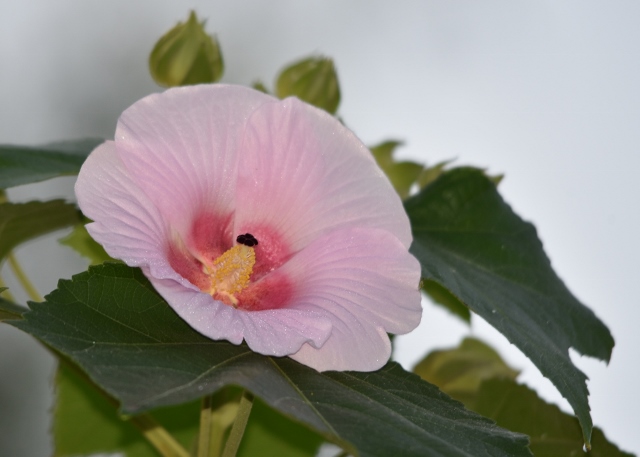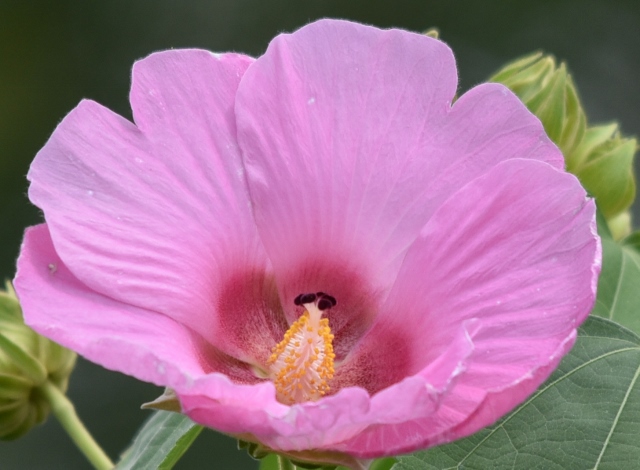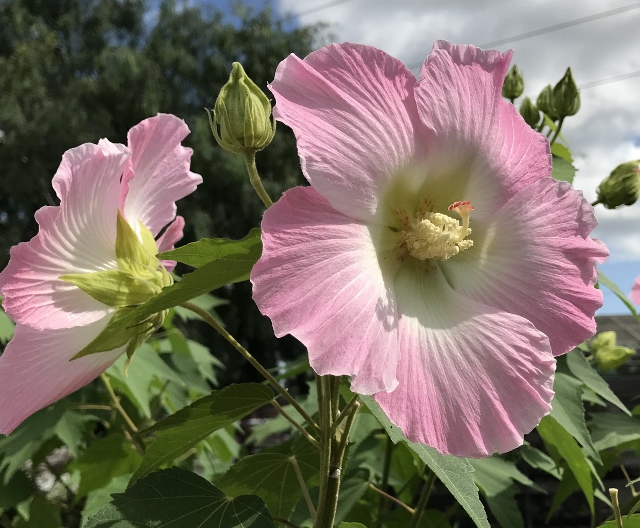Story and photos by Anita Westervelt, Texas Master Naturalist



You could say, “a rose by any other name is” changeable — and if you’re talking about Hibiscus mutabilis, one of its common names is changeable rose-mallow. This giant of a flower has other names, cotton rose, cotton rosemallow and its most common name, Confederate rose.
As names go, it’s neither a Confederate nor a rose. It’s a hibiscus, in the Malvaceae (mallow) family, and its origins are in ancient China, although the lovely multi-stemmed large shrub is well known throughout the Confederate states of America, which is how it got its name. Its scientific name, mutabilis, means changeable, or variable, which is fitting to a characteristic of the flower’s proclivity of changing color as it goes through the day.
Confederate rose blooms can be single or double and reach to six inches across. They open in the morning in their lightest shade, some completely white, others pale pink. By noon, the white bloom will have turned pink, and by nightfall, a deeper pink. Pale pink blooms turn deep pink by evening. There are hundreds of varieties of hibiscus and many variations of the Confederate rose colorings.
Although not native to the Valley, Confederate rose is a fall-through-winter popular bloomer in our sub-tropical zone 10. Just now beginning its spectacular flower show, it’s a hit with bees and butterflies, too. Even without the blooms, the shrub commands attention. It can grow to 15 feet in height with nearly a 10 foot spread. The huge, dark green, tropical-looking leaves can reach to 10 inches across.
Now that September has rolled around, it’s a good time to start planting in the garden again after the scorching heat of the summer. Confederate rose is fast growing and nearly maintenance free. Plant it in full sun. It does best in rich, well-drained, but moist soil for most of the year. Wilting or drooping leaves indicate insufficient water. It needs less water in winter.
A Confederate rose planted now will begin to grow next spring and spend the summer expanding, gaining height and filling out its leaves. Don’t lose faith during August’s drought. By September, buds will form and then overnight, the shrub will be a showcase of blooms.
Hibiscus like a monthly shot of hibiscus-specific fertilizer, 10-4-12, in the warmer months. Water the plants well and then broadcast granules around underneath. The granules can be scratched into the soil. After applying the granules, water again. Hibiscus are prone to white fly infestations at certain times of the year. Be prepared with an insecticidal soap spray. Follow label directions. White fly, especially, like to take up on the underside of leaves.
A harsh winter may defoliate the shrub. Prune in late winter or early spring prior to leaf buds developing if you want to reduce the size of the shrub. Prune broken or dead branches when discovered. Confederate rose is easy to propagate by stem cuttings. Take 12-18 inch cuttings and root in water or potting soil kept moist. Protect from harsh elements until spring when they can be planted in the ground.
